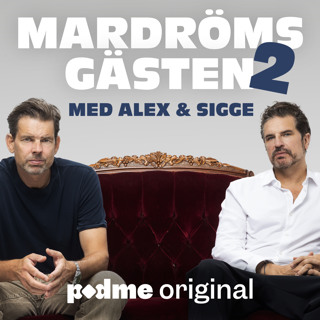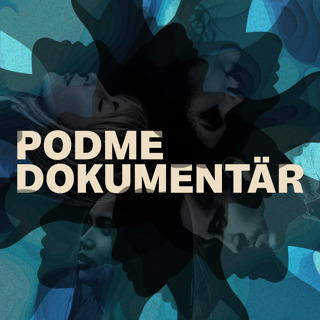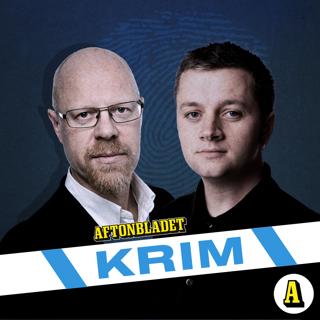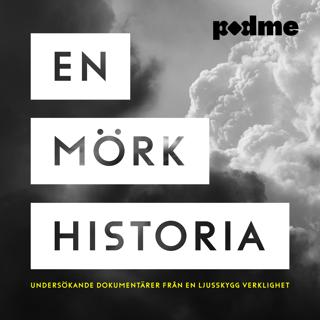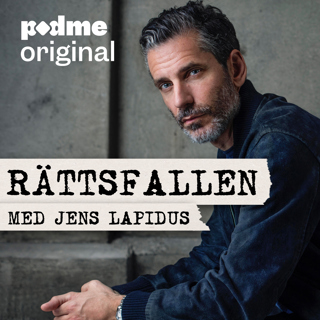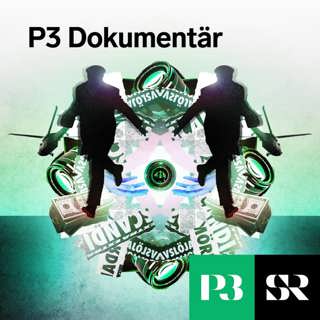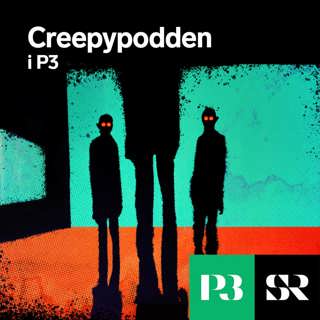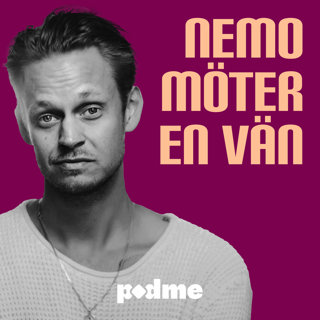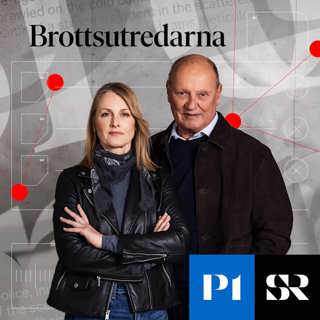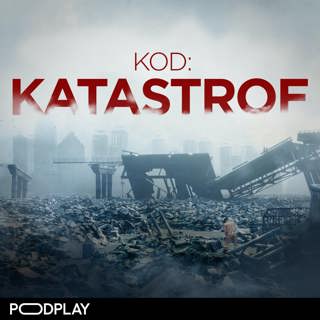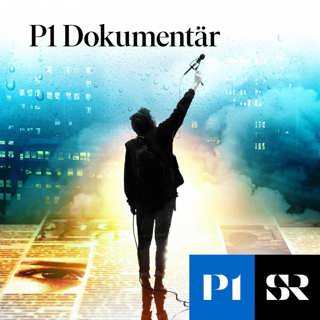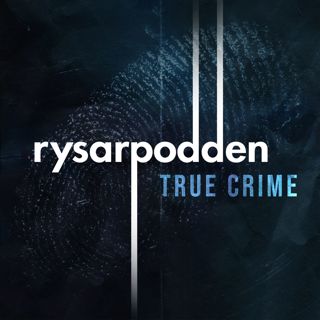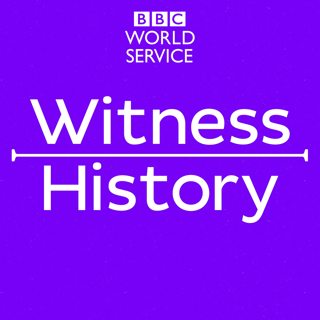
The first global case of coral bleaching
In 1998, a mysterious phenomenon turned many of the world’s most colourful coral reefs deathly white.It was the first recorded global coral bleaching event in history, and ecologists blamed it on rising ocean temperatures caused by climate change. Studies showed that when the oceans get warmer, it stresses the corals, causing them to expel the algae that give them their colour, and so turn white.Since then there have been four global bleaching events, which have destroyed up to 20% of the world’s reefs, and threatened the economy, tourism and livelihoods of more than 30 countries.Marine ecologist Clive Wilkinson worked as co-ordinator for the Global Coral Reef Monitoring Network, based in Queensland, Australia. He tells Jane Wilkinson how the first reports of the phenomenon caused shockwaves in 1998.Eye-witness accounts brought to life by archive. Witness History is for those fascinated by the past. We take you to the events that have shaped our world through the eyes of the people who were there. For nine minutes every day, we take you back in time and all over the world, to examine wars, coups, scientific discoveries, cultural moments and much more. Recent episodes explore everything from football in Brazil, the history of the ‘Indian Titanic’ and the invention of air fryers, to Public Enemy’s Fight The Power, subway art and the political crisis in Georgia. We look at the lives of some of the most famous leaders, artists, scientists and personalities in history, including: visionary architect Antoni Gaudi and the design of the Sagrada Familia; Michael Jordan and his bespoke Nike trainers; Princess Diana at the Taj Mahal; and Görel Hanser, manager of legendary Swedish pop band Abba on the influence they’ve had on the music industry. You can learn all about fascinating and surprising stories, such as the time an Iraqi journalist hurled his shoes at the President of the United States in protest of America’s occupation of Iraq; the creation of the Hollywood commercial that changed advertising forever; and the ascent of the first Aboriginal MP.(Photo: Reef in Trat, Thailand, damaged by coral bleaching. Credit: Sirachai Arunrugstichai/Getty Images)
6 Feb 10min

Cuban blindness
In the early 1990s, as Cuba faced a devastating economic crisis, leading to severe food shortages and malnutrition, around 50,000 Cubans were inexplicably struck down with sight loss.One of America's leading eye specialists, Dr Alfredo Sadun, was invited to the communist-ruled island by Fidel Castrol to help figure out what was going on. Mike Lanchin spoke to Dr Sadun in 2021.Eye-witness accounts brought to life by archive. Witness History is for those fascinated by the past. We take you to the events that have shaped our world through the eyes of the people who were there. For nine minutes every day, we take you back in time and all over the world, to examine wars, coups, scientific discoveries, cultural moments and much more. Recent episodes explore everything from football in Brazil, the history of the ‘Indian Titanic’ and the invention of air fryers, to Public Enemy’s Fight The Power, subway art and the political crisis in Georgia. We look at the lives of some of the most famous leaders, artists, scientists and personalities in history, including: visionary architect Antoni Gaudi and the design of the Sagrada Familia; Michael Jordan and his bespoke Nike trainers; Princess Diana at the Taj Mahal; and Görel Hanser, manager of legendary Swedish pop band Abba on the influence they’ve had on the music industry. You can learn all about fascinating and surprising stories, such as the time an Iraqi journalist hurled his shoes at the President of the United States in protest of America’s occupation of Iraq; the creation of the Hollywood commercial that changed advertising forever; and the ascent of the first Aboriginal MP.(Photo: A man undergoes an eye examination in Cuba in1993. Credit: Adalberto Roque/AFP/Getty Images)
5 Feb 10min

Oradour massacre
In June 1944, a village in France was destroyed in just one day. German soldiers entered Oradour-sur-Glane and gathered the villagers together. They separated the men from the women and children and took groups to different locations of the village.On that day, 642 were killed. Robert Hébras was just a teenager at the time.Robert’s granddaughter, Agathe Hébras tells Gill Kearsley his powerful story, from the arrival of the soldiers to his escape and then his realisation that he was one of the few survivors of the massacre. A warning, this programme contains descriptions of death.Eye-witness accounts brought to life by archive. Witness History is for those fascinated by the past. We take you to the events that have shaped our world through the eyes of the people who were there. For nine minutes every day, we take you back in time and all over the world, to examine wars, coups, scientific discoveries, cultural moments and much more. Recent episodes explore everything from football in Brazil, the history of the ‘Indian Titanic’ and the invention of air fryers, to Public Enemy’s Fight The Power, subway art and the political crisis in Georgia. We look at the lives of some of the most famous leaders, artists, scientists and personalities in history, including: visionary architect Antoni Gaudi and the design of the Sagrada Familia; Michael Jordan and his bespoke Nike trainers; Princess Diana at the Taj Mahal; and Görel Hanser, manager of legendary Swedish pop band Abba on the influence they’ve had on the music industry. You can learn all about fascinating and surprising stories, such as the time an Iraqi journalist hurled his shoes at the President of the United States in protest of America’s occupation of Iraq; the creation of the Hollywood commercial that changed advertising forever; and the ascent of the first Aboriginal MP.(Photo: Robert Hebras at age 86, walks through the ruins of Oradour-sur-Glane. Credit: Jean-Pierre Muller/AFP via Getty Images)
4 Feb 9min

Jacques Derrida: ‘Rock star’ philosopher
In 1966, at Johns Hopkins University in the US, a little-known glamorous French philosopher called Jacques Derrida took to the stage and eviscerated the prevailing philosophy of the day, making him an overnight sensation.The following year, he published three hugely influential books making the case for his theory of “deconstruction”, which questioned the foundations of Western thought and knowledge.Deconstruction’s influence can still be felt today: from calls to decolonise the curriculum, to experimental architecture, to feminist retellings of the classics. While the word “deconstruct” has become widely used. On his death in 2004, The Guardian newspaper wrote: "Derrida's name has probably been mentioned more frequently in books, journals, lectures, and common-room conversations during the last 30 years than that of any other living thinker.”Hélène Cixous is one of France's most influential writers and a lifelong friend of Derrida. She speaks to Ben Henderson.Eye-witness accounts brought to life by archive. Witness History is for those fascinated by the past. We take you to the events that have shaped our world through the eyes of the people who were there. For nine minutes every day, we take you back in time and all over the world, to examine wars, coups, scientific discoveries, cultural moments and much more. Recent episodes explore everything from football in Brazil, the history of the ‘Indian Titanic’ and the invention of air fryers, to Public Enemy’s Fight The Power, subway art and the political crisis in Georgia. We look at the lives of some of the most famous leaders, artists, scientists and personalities in history, including: visionary architect Antoni Gaudi and the design of the Sagrada Familia; Michael Jordan and his bespoke Nike trainers; Princess Diana at the Taj Mahal; and Görel Hanser, manager of legendary Swedish pop band Abba on the influence they’ve had on the music industry. You can learn all about fascinating and surprising stories, such as the time an Iraqi journalist hurled his shoes at the President of the United States in protest of America’s occupation of Iraq; the creation of the Hollywood commercial that changed advertising forever; and the ascent of the first Aboriginal MP.
3 Feb 10min

English TV lessons in China go primetime
In 1981 the first major series of English lessons was broadcast on Chinese television.President Deng Xiaoping had allowed private enterprise and was pursuing an era of “opening up” to the rest of the world. It followed a decade of educational turmoil when teachers had been castigated as bourgeois by the former leader Mao Zedong.Kathy Flower presented the English education programme, Follow Me, several times a week at primetime. It was watched by an estimated 500 million people keen to get a taste of the English language and observe westerners on television. Kathy Flower recalls to Josephine McDermott what it was like becoming the most famous foreign person in China.Eye-witness accounts brought to life by archive. Witness History is for those fascinated by the past. We take you to the events that have shaped our world through the eyes of the people who were there. For nine minutes every day, we take you back in time and all over the world, to examine wars, coups, scientific discoveries, cultural moments and much more. Recent episodes explore everything from football in Brazil, the history of the ‘Indian Titanic’ and the invention of air fryers, to Public Enemy’s Fight The Power, subway art and the political crisis in Georgia. We look at the lives of some of the most famous leaders, artists, scientists and personalities in history, including: visionary architect Antoni Gaudi and the design of the Sagrada Familia; Michael Jordan and his bespoke Nike trainers; Princess Diana at the Taj Mahal; and Görel Hanser, manager of legendary Swedish pop band Abba on the influence they’ve had on the music industry. You can learn all about fascinating and surprising stories, such as the time an Iraqi journalist hurled his shoes at the President of the United States in protest of America’s occupation of Iraq; the creation of the Hollywood commercial that changed advertising forever; and the ascent of the first Aboriginal MP.(Photo: Kathy Flower at a book signing in China. Credit: BBC)
31 Jan 10min

1968 New York City teachers' strike
A series of unprecedented teachers’ strikes temporarily shut most of New York’s schools in the late 1960s, provoked by an ongoing dispute over whether parents could have a say in the running of their children’s schools. ‘Community control’ over the city’s schools was a divisive issue at the time, part of the civil rights and Black Power movement, in the USA.Linda Mannheim spoke to Monifa Edwards, who was a pupil at a school in the district of Ocean Hill-Brownsville, a name that became synonymous with the struggle over who controlled the local schools: the communities or the mainly white city officials.A CTVC production.Eye-witness accounts brought to life by archive. Witness History is for those fascinated by the past. We take you to the events that have shaped our world through the eyes of the people who were there. For nine minutes every day, we take you back in time and all over the world, to examine wars, coups, scientific discoveries, cultural moments and much more. Recent episodes explore everything from football in Brazil, the history of the ‘Indian Titanic’ and the invention of air fryers, to Public Enemy’s Fight The Power, subway art and the political crisis in Georgia. We look at the lives of some of the most famous leaders, artists, scientists and personalities in history, including: visionary architect Antoni Gaudi and the design of the Sagrada Familia; Michael Jordan and his bespoke Nike trainers; Princess Diana at the Taj Mahal; and Görel Hanser, manager of legendary Swedish pop band Abba on the influence they’ve had on the music industry. You can learn all about fascinating and surprising stories, such as the time an Iraqi journalist hurled his shoes at the President of the United States in protest of America’s occupation of Iraq; the creation of the Hollywood commercial that changed advertising forever; and the ascent of the first Aboriginal MP.(Photo: The Ocean Hill-Brownsville Governing Board and supporters march over the Brooklyn Bridge in March 1969. Credit: David Fenton)
30 Jan 9min

Lithuania's 'wolf children'
In the aftermath of World War Two, children were left orphaned, or separated from their families. They were forced to flee East Prussia when the Red Army advanced.Whilst trying to survive, on their way to Lithuania, they were likened to hungry wolves roaming through forests. Now aged 84, 'wolf child' Luise Quitsch tells Megan Jones about her journey and what life was like growing up in Lithuania. Eye-witness accounts brought to life by archive. Witness History is for those fascinated by the past. We take you to the events that have shaped our world through the eyes of the people who were there. For nine minutes every day, we take you back in time and all over the world, to examine wars, coups, scientific discoveries, cultural moments and much more. Recent episodes explore everything from football in Brazil, the history of the ‘Indian Titanic’ and the invention of air fryers, to Public Enemy’s Fight The Power, subway art and the political crisis in Georgia. We look at the lives of some of the most famous leaders, artists, scientists and personalities in history, including: visionary architect Antoni Gaudi and the design of the Sagrada Familia; Michael Jordan and his bespoke Nike trainers; Princess Diana at the Taj Mahal; and Görel Hanser, manager of legendary Swedish pop band Abba on the influence they’ve had on the music industry. You can learn all about fascinating and surprising stories, such as the time an Iraqi journalist hurled his shoes at the President of the United States in protest of America’s occupation of Iraq; the creation of the Hollywood commercial that changed advertising forever; and the ascent of the first Aboriginal MP.(Photo: Luise. Credit: Luise Quitsch)
29 Jan 10min

The Baltic chain protest
On 23 August 1989, approximately two million people joined hands to form a 690-kilometre human chain across Estonia, Latvia and Lithuania.It was a key moment in the protests in Eastern Europe that became known as the Singing Revolution.In 2010, Damien McGuinness spoke to MEP Sandra Kalniete, a Latvian organiser of the event. Eye-witness accounts brought to life by archive. Witness History is for those fascinated by the past. We take you to the events that have shaped our world through the eyes of the people who were there. For nine minutes every day, we take you back in time and all over the world, to examine wars, coups, scientific discoveries, cultural moments and much more. Recent episodes explore everything from football in Brazil, the history of the ‘Indian Titanic’ and the invention of air fryers, to Public Enemy’s Fight The Power, subway art and the political crisis in Georgia. We look at the lives of some of the most famous leaders, artists, scientists and personalities in history, including: visionary architect Antoni Gaudi and the design of the Sagrada Familia; Michael Jordan and his bespoke Nike trainers; Princess Diana at the Taj Mahal; and Görel Hanser, manager of legendary Swedish pop band Abba on the influence they’ve had on the music industry. You can learn all about fascinating and surprising stories, such as the time an Iraqi journalist hurled his shoes at the President of the United States in protest of America’s occupation of Iraq; the creation of the Hollywood commercial that changed advertising forever; and the ascent of the first Aboriginal MP.(Photo: Estonian nationalist demonstrators taking part in the protest. Credit: Reuters/Dominique Dudouble)
28 Jan 9min


